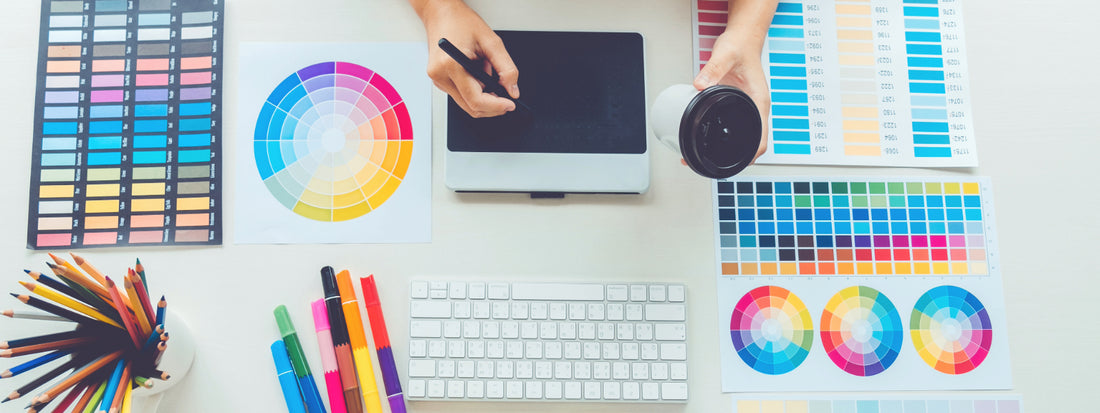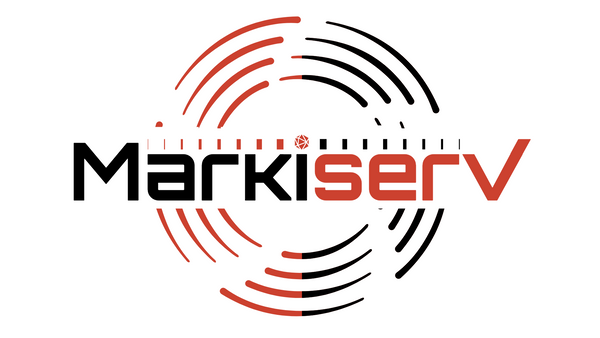
If You Are A Business Leader: How Graphic Design Fits in Your Strategy
Share
Why Graphic Design Should Be Central to Business Leadership Strategies
In today’s visually driven world, graphic design isn’t a luxury—it’s a necessity. Business leaders who incorporate design into their strategies unlock new dimensions of growth, engagement, and differentiation. From B2B interactions to B2C campaigns and B2G proposals, the role of design is evolving to be a cornerstone of business success. The global graphic design market is valued at over $60 billion, this shows that services are in high demand amongst other brands, and for good reason.
While many businesses focus on operational efficiency and market positioning, visual storytelling through design often defines how a brand is perceived. When leaders prioritize graphic design, they empower their teams to create stronger brand identities, communicate more effectively, and leave lasting impressions on stakeholders. The influence of design goes beyond aesthetics; it drives decision-making, fosters emotional connections with customers, and can even have a direct impact on a business's bottom line.
The Importance of Graphic Design in Business
- Building a Strong Brand Identity
A brand identity is the visual manifestation of a company’s mission, vision, and values. It serves as a shorthand for how audiences perceive the organization. Companies with iconic branding, such as Nike or McDonald’s, have achieved universal recognition through consistent and deliberate graphic design strategies.
Beyond logos, typography, and colors, a robust brand identity incorporates the emotional responses these elements evoke. Leaders should collaborate closely with graphic designers to ensure these visuals resonate with their target audience. By conducting market research and analyzing competitors, businesses can refine their branding to stand out in a crowded marketplace.
Moreover, in a digital-first era, branding must adapt to various mediums. Social media platforms, websites, and mobile apps each have unique design requirements. Ensuring that a brand's visuals translate seamlessly across these channels reinforces professionalism and fosters trust. Every touchpoint with the consumer—from a website banner to a business card—needs to be on-brand, consistent, and reflective of the company’s values and mission.
-
Enhancing Customer Experience (CX)
Customer experience (CX) is the lifeblood of modern businesses, and graphic design plays a pivotal role in shaping it. Research shows that 88% of online consumers are unlikely to return to a website after a poor user experience. This underscores the importance of investing in intuitive, visually appealing designs.
Businesses should focus on creating user-friendly interfaces, clean layouts, and engaging visuals that simplify navigation. For instance, e-commerce brands can use high-quality product images, zoom functionality, and augmented reality tools to elevate the shopping experience. This level of detail not only improves usability but also enhances customer satisfaction, increasing the likelihood of repeat business and customer loyalty.
In physical spaces, design elements like signage, store layouts, and packaging also contribute to CX. For example, environmentally friendly packaging with minimalist designs not only aligns with current trends but also appeals to eco-conscious consumers. These small, yet impactful, design decisions can reinforce a brand's commitment to sustainability, building customer trust and loyalty.
- Communicating Effectively Through Design
Communication is at the heart of every successful business, and visual elements often communicate faster and more effectively than words. Whether presenting complex data or pitching a new idea, graphic design transforms abstract concepts into clear, compelling visuals.
Infographics, for instance, are invaluable tools for breaking down data-heavy reports into digestible formats. Business leaders can use these tools to present performance metrics, industry trends, and forecasts in a manner that is easy for stakeholders to understand. This clarity enhances decision-making and drives better business outcomes.
For government contractors, effective communication is critical when vying for projects. Visual elements like organizational charts, process workflows, and compliance overviews not only enhance the clarity of proposals but also establish credibility. Well-designed proposals demonstrate attention to detail, professionalism, and a commitment to quality, which are essential when vying for high-stakes government contracts.
-
Driving Marketing Success with Design
In the realm of marketing, graphic design reigns supreme. Ads, social media posts, email campaigns, and even packaging all rely on compelling visuals to grab attention and convert leads. Great design can make the difference between an overlooked ad and one that resonates with potential customers.
A strong marketing strategy integrates consistent branding across all campaigns, ensuring that customers recognize the brand regardless of the platform. For example, Coca-Cola’s iconic red and white color scheme creates immediate brand recall, regardless of the campaign or context.
Interactive content is another growing trend. Businesses can leverage motion graphics, AR experiences, and animated videos to engage users in new and innovative ways. These creative assets enhance brand storytelling and foster deeper connections with audiences. The modern consumer expects immersive, engaging content—by incorporating cutting-edge design techniques, businesses can tap into this demand, boosting engagement and customer retention.
Why Business Leaders Should Prioritize Graphic Design
-
Staying Competitive
In today’s global economy, competition is fierce. Differentiating your business requires more than just a superior product or service—it demands a visual identity that captures attention and conveys trustworthiness. A strong visual identity helps businesses stand out from the competition, grab attention, and establish long-term loyalty.
For B2B companies, this differentiation can mean designing professional trade show booths or creating sleek, easy-to-read product catalogs. Trade shows are prime opportunities to network with potential clients, and a well-designed booth can create a lasting impression. For B2C brands, it may involve dynamic social media graphics or captivating video ads. Staying ahead of design trends allows companies to remain competitive and relevant in a crowded market.
-
Attracting and Retaining Customers
A well-designed brand aesthetic attracts customers and keeps them coming back. In addition to fostering loyalty, cohesive visuals create emotional connections with audiences. For example, Patagonia’s minimalist branding reflects its commitment to sustainability, resonating with environmentally conscious consumers.
Retention strategies should also consider personalized design. Email campaigns with tailored visuals based on user preferences or behavior can significantly boost engagement rates. Tools like Canva or Adobe Creative Cloud enable businesses to quickly create and customize such assets at scale, enabling brands to develop and nurture personalized relationships with their customers. Personalized visuals can greatly enhance the customer journey, making customers feel valued and understood.
-
Supporting Digital Transformation
Graphic design is the backbone of digital transformation. As businesses move online, the need for visually engaging digital experiences becomes paramount. From websites and apps to email campaigns and webinars, design ensures every digital touchpoint reflects the brand’s professionalism and values. Businesses that focus on strong digital design experiences set themselves up for future success by offering seamless and intuitive online interactions.
AI-powered design tools are revolutionizing this space. By using these tools, businesses can generate on-brand visuals quickly, reducing production timelines while maintaining quality. This efficiency is especially critical for startups and small businesses with limited resources, as it allows them to stay competitive without sacrificing creativity.
How Graphic Design Benefits Different Industries
-
B2B (Business-to-Business)
B2B companies often face the challenge of presenting complex information to potential clients or partners. Graphic design simplifies this process by creating visually compelling presentations, product sheets, and case studies. Clear, professional design ensures that B2B communication is both effective and persuasive.
Trade shows and conferences are prime opportunities for B2B companies to shine. A well-designed booth with engaging visuals can attract attention and spark meaningful conversations. Digital assets like downloadable PDFs or interactive product demos further enhance the customer experience. As the B2B market becomes increasingly competitive, those companies that prioritize design will have the advantage in terms of engaging and retaining clients.
-
B2C (Business-to-Consumer)
In the B2C space, visual branding directly influences purchasing behavior. Vibrant packaging, creative advertisements, and seamless web design all contribute to a consumer’s perception of the brand. Great design increases brand appeal and sets the tone for customer engagement.
Social media platforms like Instagram and TikTok have amplified the importance of graphic design. Short videos, carousel posts, and branded filters create opportunities for engagement while reinforcing brand identity. By using analytics tools, B2C businesses can refine their design strategies to target specific demographics more effectively. With a proper design strategy, B2C businesses can connect more meaningfully with customers and drive conversion rates.
-
B2G (Business-to-Government)
Securing government contracts often requires a meticulous approach to proposals. Graphic design enhances the professionalism of these documents, ensuring they are clear, organized, and visually appealing. A polished, well-organized proposal can significantly increase the chances of winning government contracts.
Leaders in the B2G space should also consider accessibility in their design strategies. Adhering to Section 508 and WCAG guidelines ensures materials are inclusive, improving the likelihood of success in government procurement processes. Government proposals that are easy to navigate and visually compelling stand a better chance of being approved.
Conclusion
Graphic design is more than a creative discipline—it’s a strategic tool that drives business growth, enhances customer experiences, and ensures effective communication. By prioritizing design in their strategies, leaders across B2B, B2C, and B2G industries can unlock new opportunities and gain a competitive edge. Investing in design not only benefits branding and marketing but also fosters long-term relationships with clients, customers, and stakeholders. By weaving design into the fabric of their operations, business leaders can ensure that they stay ahead of the curve in an increasingly visual world.
Helpful Links to Learn More:
Description: Creative Bloq is a comprehensive resource for creative professionals, offering design tutorials, software reviews, and insights into emerging trends in graphic design and branding.
Description: Adobe’s blog explores how businesses can leverage tools like Photoshop, Illustrator, and InDesign for impactful design. It also features articles on the importance of design in branding and marketing strategies.
